From its rock foundation near the riverbed, the imposing silhouette of Bran Castle rises majestically above the valley below. A somber and solitary structure that seems to be gazing down upon the hordes of visitors flocking at its gates. For most people, Bran Castle in Romania will evoke one name only: Dracula, the bloodthirsty character from Transylvania. But is Bran the real castle of Dracula? And did Dracula really exist, or he is just a fictitious character? The answer may surprise you!
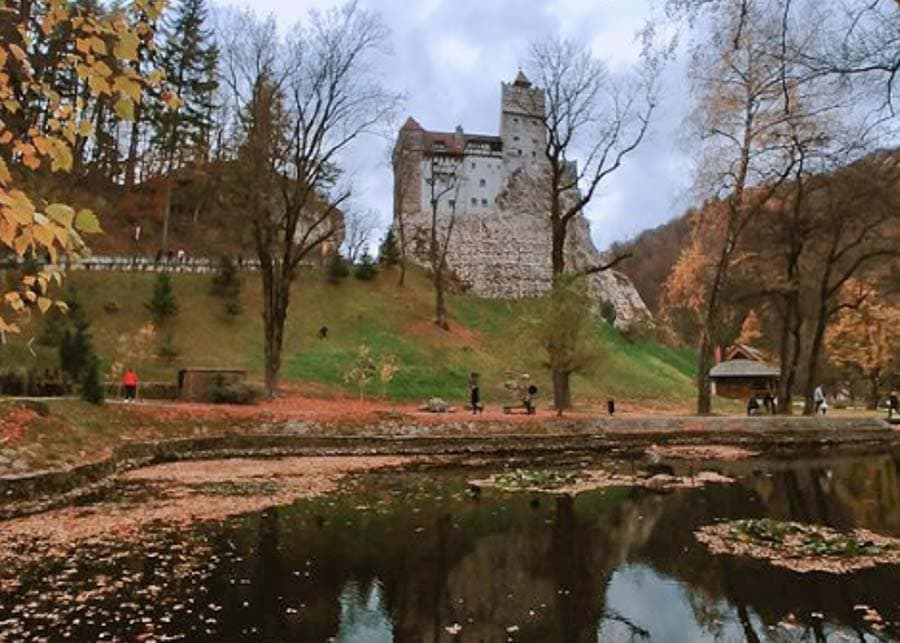
Table of Contents
Dracula and His Castle: Legend vs. History
All historic evidence indicates that Bran Castle was never Dracula’s castle. Count Dracula, the sadistic prince condemned to live off the blood of the living people for eternity, was the creation of Bram Stoker, a 19th century Irish novelist.
Inspired by the stories and legends of Transylvania, whose local population believed in strigoi (vampires), Stocker placed his character in a fortress that perfectly fits the description of Bran Castle.
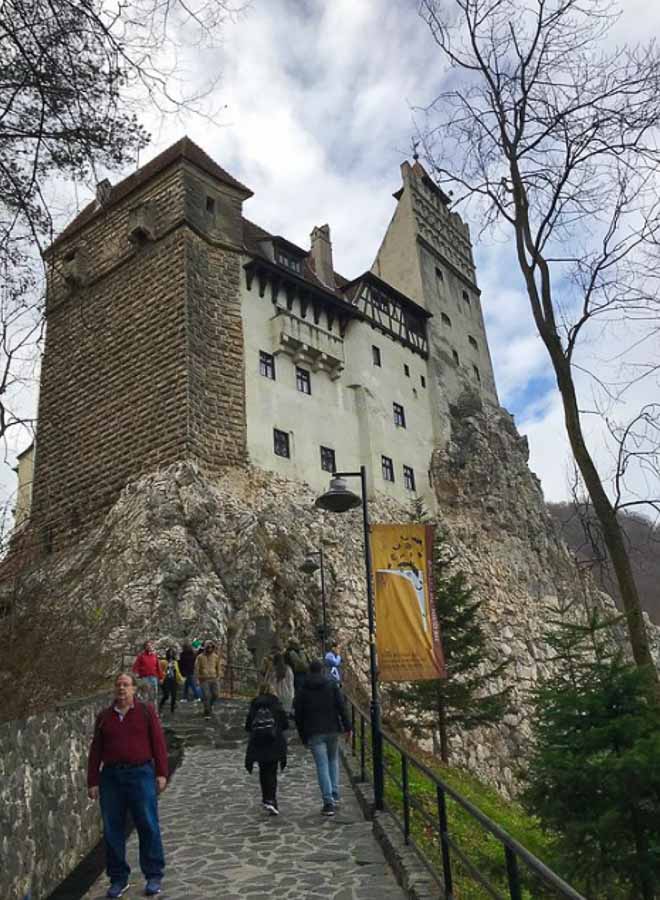
But in reality Bram Stocker never visited Romania. He depicted Dracula’s castle based on a description of Bran Castle that was available in Britain in the 19th century.
Connection to Bram Stocker’s Dracula
How about Dracula? Who inspired this character? Let’s examine the historical roots of the legendary vampire.
Although Dracula is an imaginary creation, Stoker named his infamous character after a real person: Vlad Tepes (the Impaler). Vlad the Impaler was Prince of Wallachia between 1431 and 1476. The cruel methods he used for punishing his enemies, made him a legend. Vlad was famous for beheading, boiling, burning and skinning his enemies alive.
One of the greatest examples of his cruelty was at the time when he used a forest of corpses to shock and repel an invading Ottoman army. But despite being portrayed as a sadistic and ruthless despot, Vlad Tepes was a great military leader and a hero to his people.
The character’s name – Dracula – derives from an appellation of Vlad II (Vlad Tepes’s father) who was also called ‘Vlad Dracul.’ The name Dracul, although translated in Romanian as the Devil, was in this case a title of the knightly Order of the Dragon, whose mission was to defend Christianity.
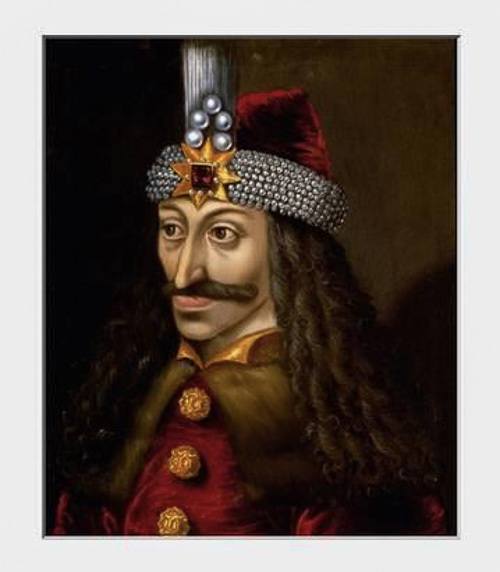
Vlad the Impaler’s only connection with Bran was through an alliance with the Princes of Transylvania who asked him to handle the anti-Ottoman resistance at the border. Some historic records also indicate that Vlad might was actually a prisoner in Bran Castle for some time, before they transferred him to another prison near Budapest. His real castle was in fact at Poenari, which is now in ruins.
A Brief History of Bran Castle
Like many other castles in Romania, Bran was at first a military fortification built by the Teutonic Knights in 1211. In 1377 the Hungarian King Louis I of Anjou granted the people of Brasov the privilege of building a castle over the fortress ruins.
The location of Bran fortress was very strategic: up on a high cliff within a narrow gorge, on the passageway between Transylvania and Wallachia (in old Romania).
Over the course of history the fortress changed hands many times. It passed from King Sigismund of Luxembourg to his ally, Prince Mircea the Elder of Wallachia, then to the Princes of Transylvania.
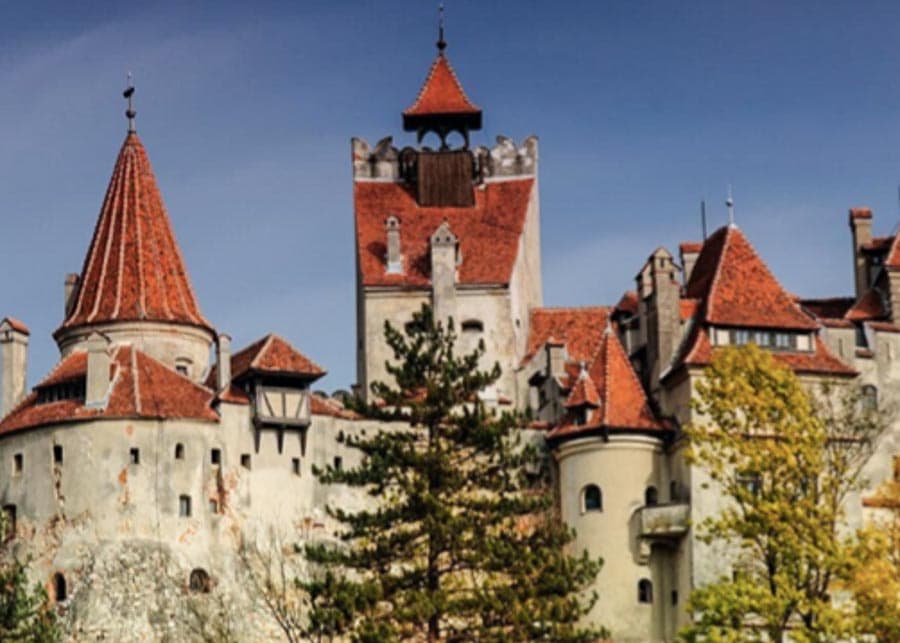
In 1500, one of the Kings of Hungary who owned Bran at the time, borrowed a large sum of money from the town of Brasov, mortgaging the Castle. But after the expiration of the term, the Hungarian King wasn’t able to repay his debt. As a result, Bran Castle became the property of the town of Brasov who transformed it into a customhouse for the merchants crossing the Bran Pass.
READ NEXT: What You Should Know About Romanians Before You Travel to Romania
Bran Castle in Modern Times
By 1836, after the border between Transylvania and Wallachia moved to the mountains, Bran fortress lost its military importance. The Revolution of 1848 left the magnificent medieval fortification in ruins.
In 1920, after Transylvania became part of Greater Romania, the castle became the property of Queen Marie of Romania. The Queen turned it into her favorite royal residence in the years after the First World War.
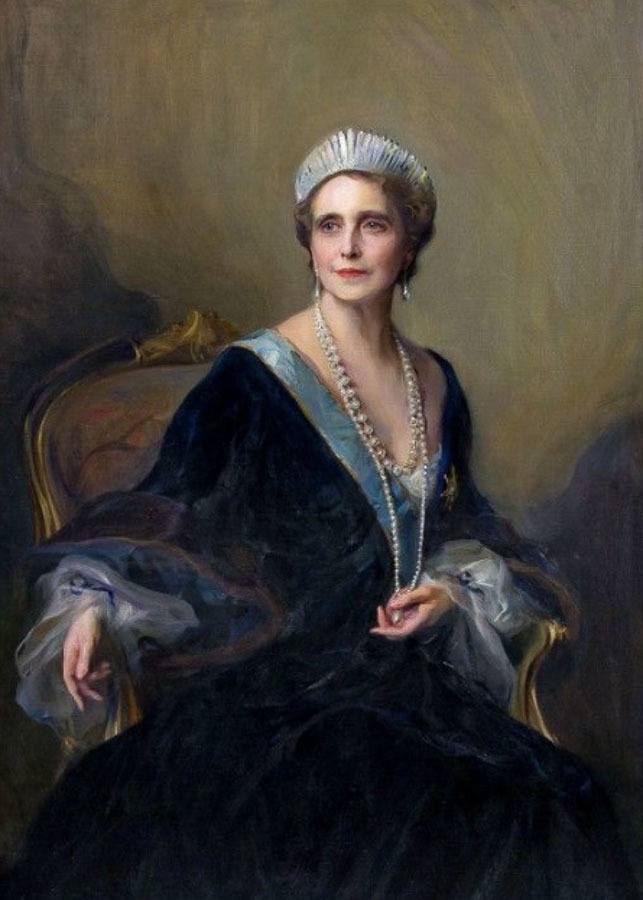
Extremely talented and a very astute decorator, Queen Marie used her feminine touch to transform the place into a fairytale home. She enlarged the windows, built new spiral stairs, installed telephone lines, tap water and electricity and even an elevator.
She turned the area around Bran Castle into an English park with two ponds and a Tea House. Queen Marie also added a guesthouse, a wooden church, staff housing, stables and a garage.
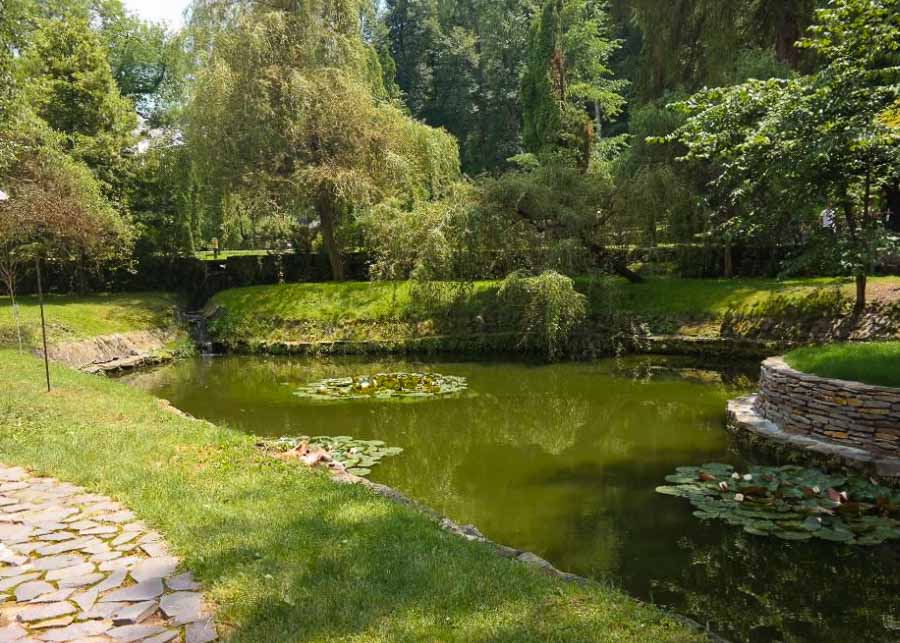
After the Queen’s death in 1938, Bran Castle became the property of Princess Ileana, the Queen’s daughter.
In 1948, the newly installed communist regime in Romania seized all the royal properties. As a result, Bran Castle became the property of the Romanian State.
In 1956 the Castle became a museum with three departments: Royal Heritage, Medieval Customs and Ethnography. Currently, Bran Castle fully re-entered in the possession of its legal heirs: Archduke Dominic, Archduchess Maria Magdalena and Archduchess Elisabeth, the tree children of Princess Ileana.
What to Look for Inside Dracula’s Castle in Bran
The castle itself is not very big, but it holds a few secret places that you could miss if you are rushing through it. There is a total of 57 rooms and an abundance of hidden corners, a beautiful winding wooden staircase and an enormous number of weaponry and armor that dates back to the 14th to the 19th centuries.
Here is what you should visit on your tour:
The Old Water Well
When visiting Bran Castle you’ll notice the top of a water well in the courtyard, but no well. The well is not just ornamental though. Back in the 14th century when the fortress was built, a 60 feet deep well was dug here through the solid rock. Also carved in the rock, just above the water level, there was secret room that served as a hiding place for the castle’s treasures in case of an attack. So what happened to the well?
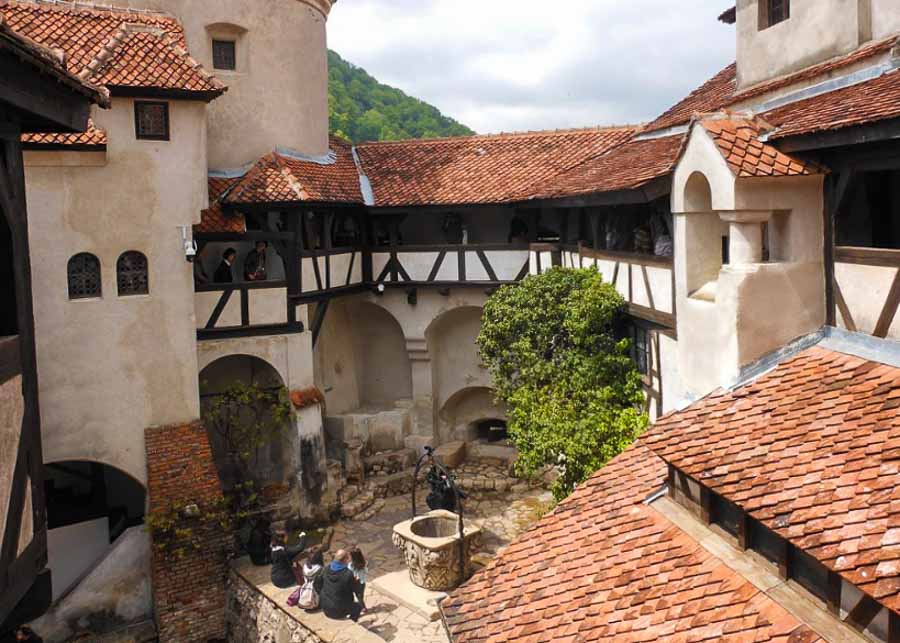
When Queen Marie remodeled Bran Castle, she extended the secret room into a corridor that reached out at the bottom of the cliff below the castle. The old well became an elevator shaft, so the Queen could go down in the gardens below without climbing all the stairs.
Today, a modern new elevator with smoke and earthquake detectors took the place of the old one. This is the longest elevator shaft in Romania, measuring 31.5 meters between the two stations (start and arrival).
The Rooms
The rooms are furnished in a rather minimalist style, which was typical for the time when the castle was built. You can still see the original brickwork and some other beautiful original features, like the arched windows and doorways, turrets and spires.
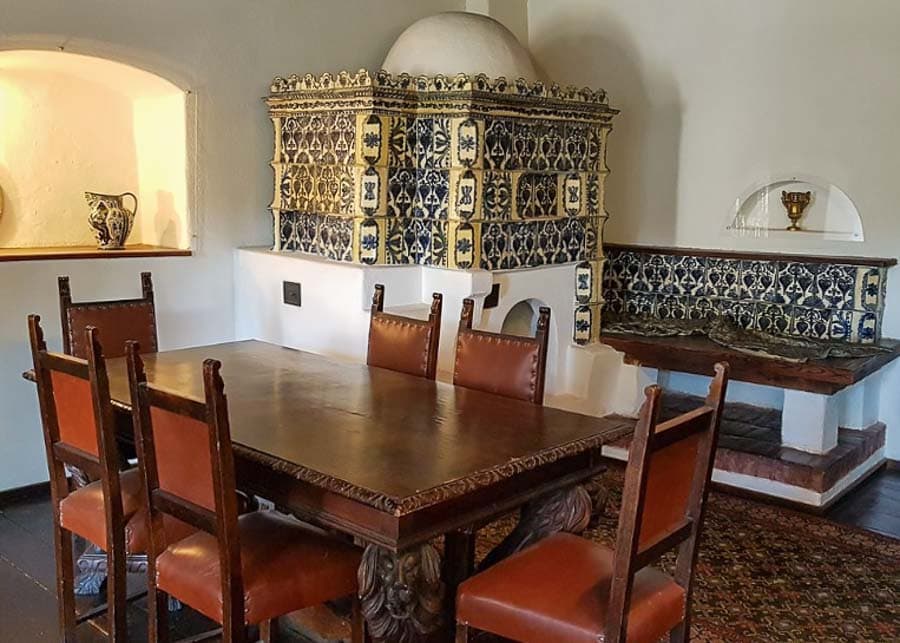
Although there is not much furniture around, there is a certain level of charm to the dark wood paneled rooms and stark white walls.
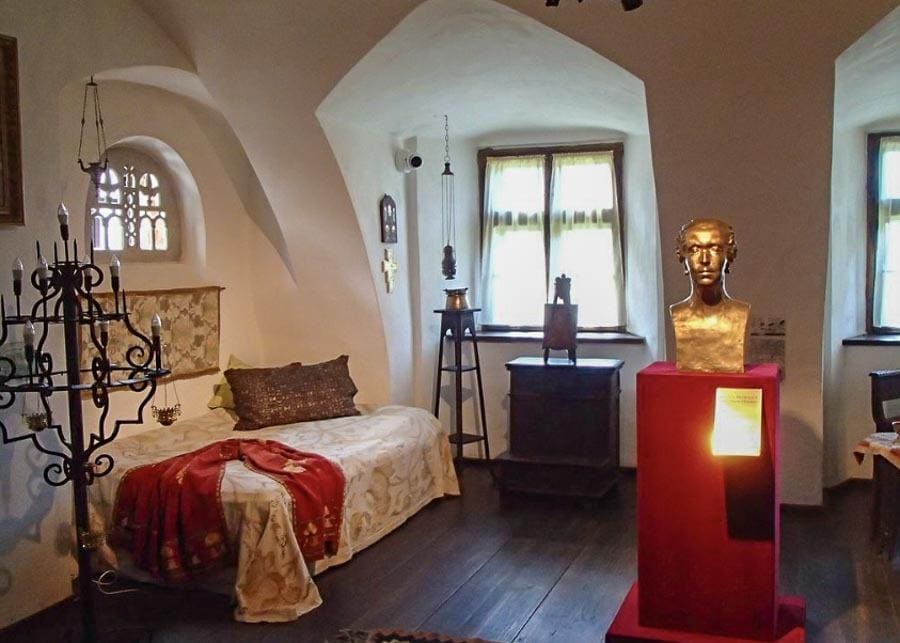
The Donjon
Bran Castle features a remarkable gothic architectural design. The imposing building is made from a combination of wood and stone. One of the highlights of the castle is the round tower (the Donjon), which is incredibly well-preserved.
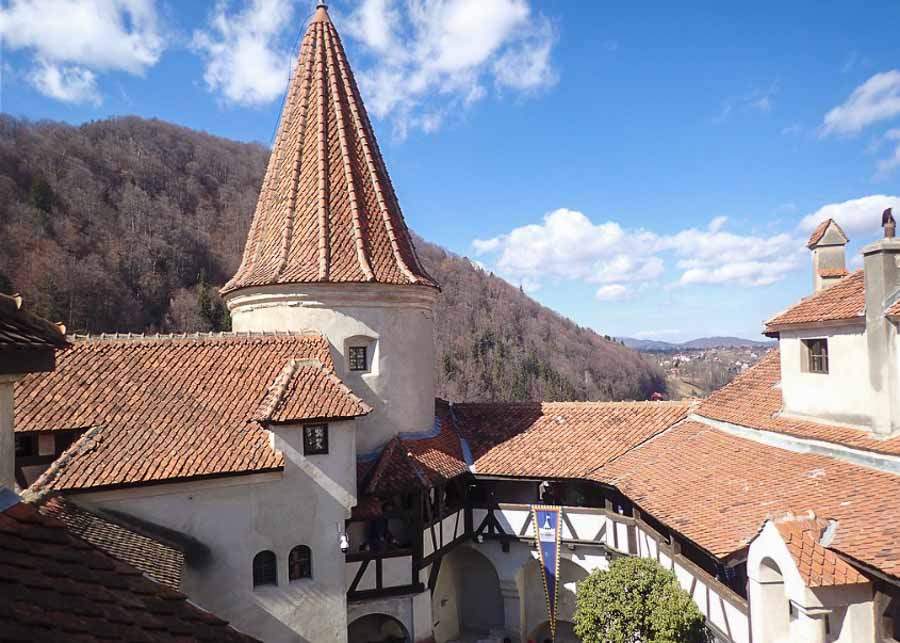
The present form of round tower dates from 1593. The old tower was destroyed by lightning.
The Dungeon
If you like spooky, you should also visit the Dungeon, where you can see all sorts of torture instruments (makes you cringe to think they have been used on people!)
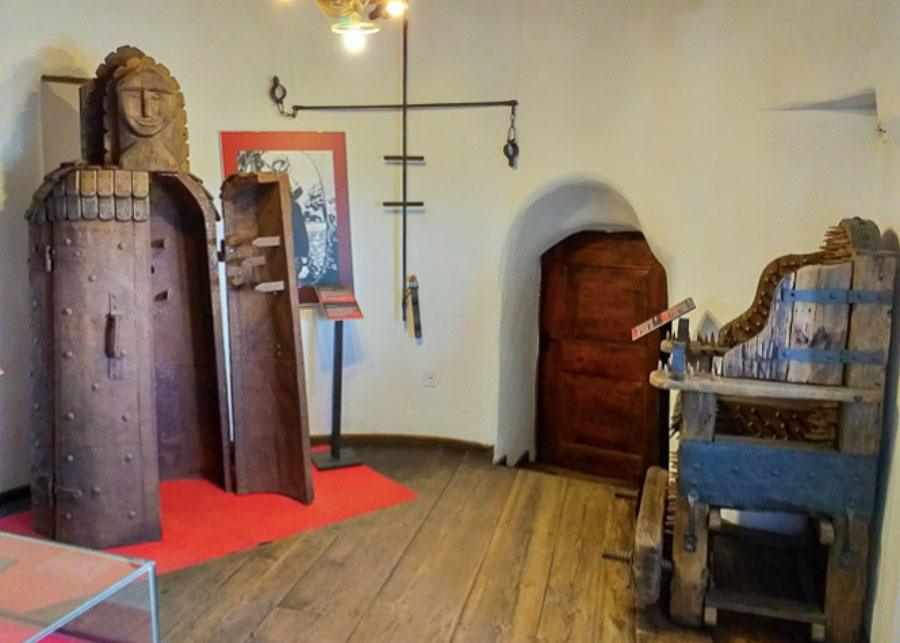
The Secret Tunnel
In 1920s, when Queen Marie ordered the castle renovations, the workers discovered a secret tunnel in the wall connecting the first and third floors. The escape stairway was so cleverly concealed behind a fake fireplace, that for generations nobody knew about its existence.
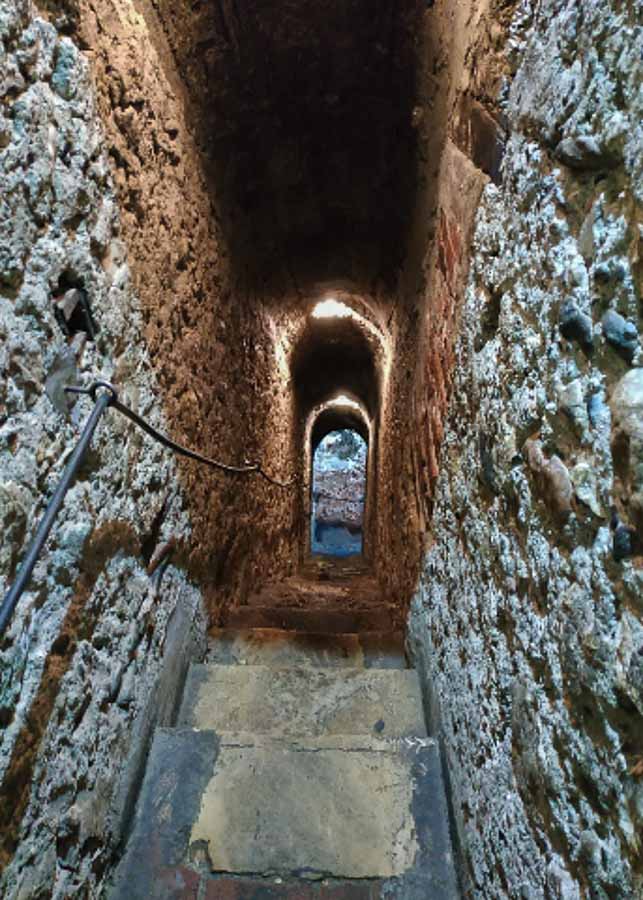
The Queen’s Heart
Before her death in 1938, Queen Marie asked that her heart be interred in a chapel in the town of Balchik, near the Black Sea, where her family had a castle that was the queen’s favorite summer home. However, in 1940 when Balchik was returned to Bulgaria, her heart was moved to Bran Castle.
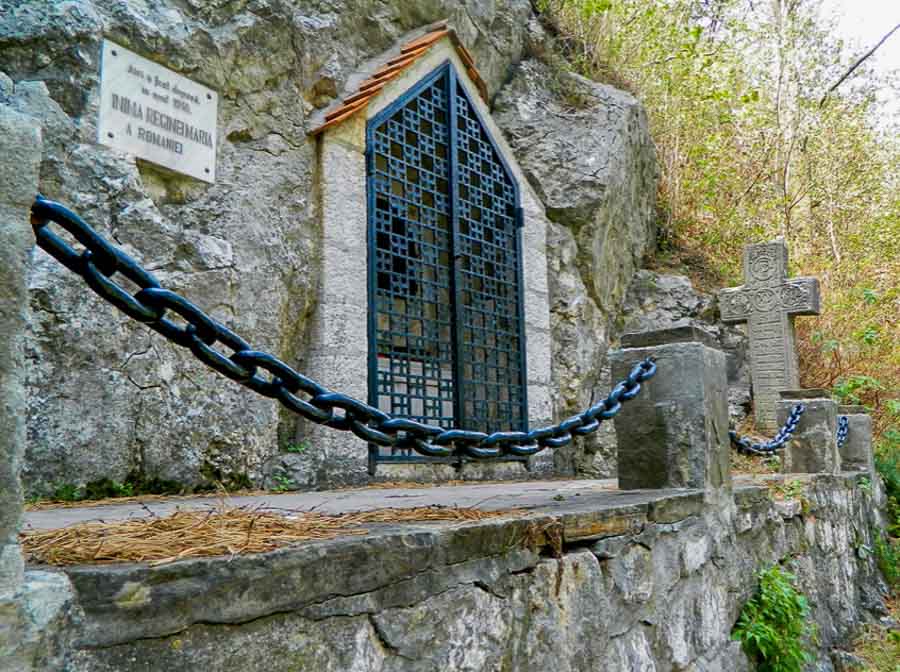
You can see the the resting place of the Queen’s heart on the south-west side of the castle, across the little creek at the edge of the forest. Queen Maria’s body is buried at the Curtea de Arges Cathedral, next to all the other monarchs of Romania.
READ NEXT: 15 Most Beautiful Churches in Romania That Even Nonbelievers Love
How to Reach Bran Castle
The Castle is located on Strada General Traian Moșoiu 24, in Bran 507025.
From Bucharest, the castle can be reached either by car, or by public transportation. The best way to reach Bran Castle from Bucharest is by car. The drive will take around 2.5 hours (135 km) via DN1/E60.
If you want to come by train, the trip is a little longer (around 3.5 hours) and you’ll also have to take a bus from the train station to the castle.
The bus journey time between Bucharest and Bran is around 5h 50m, which is rather long and I don’t recommend it.
From Brasov, there are only 28 km to Bran Castle. It takes about 25-30 minutes to drive (via DN73), or you can take the bus which is quick, easy, and cheap. The bus will leave you very close to the castle entrance (about a hundred meters away).
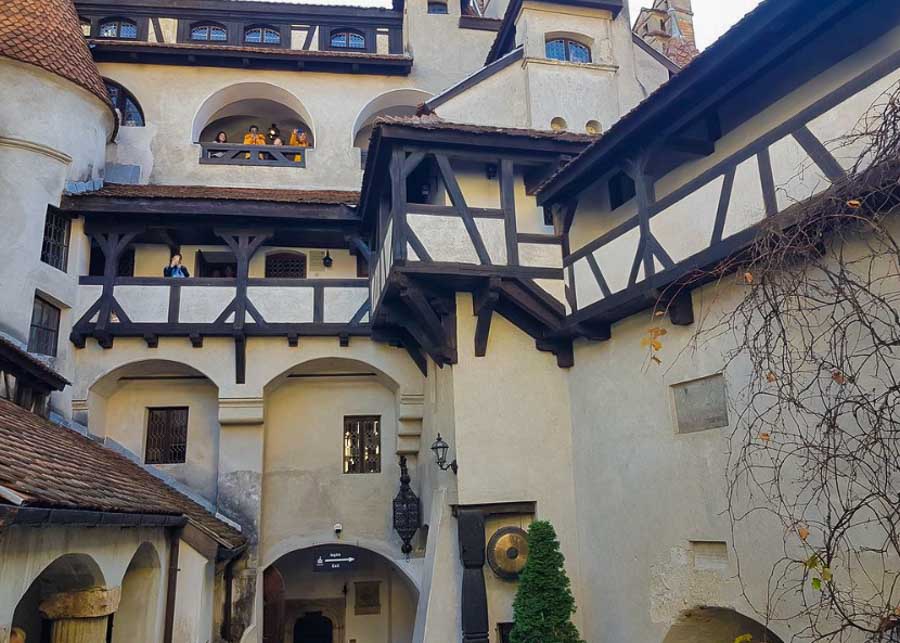
Practical Information for Bran Castle
Bran Castle (aka Dracula’s Castle) is very popular, so you should expect crowds almost year round. We visited in fall, which is off season, and still the line snaked through the market, all the way to the main road!
The castle is easy to visit, so there is no need to book an organized tour. However, if you book a tour you’ll hear all kinds of funny stories related to the history of the castle and you’ll get a lot of useful information.
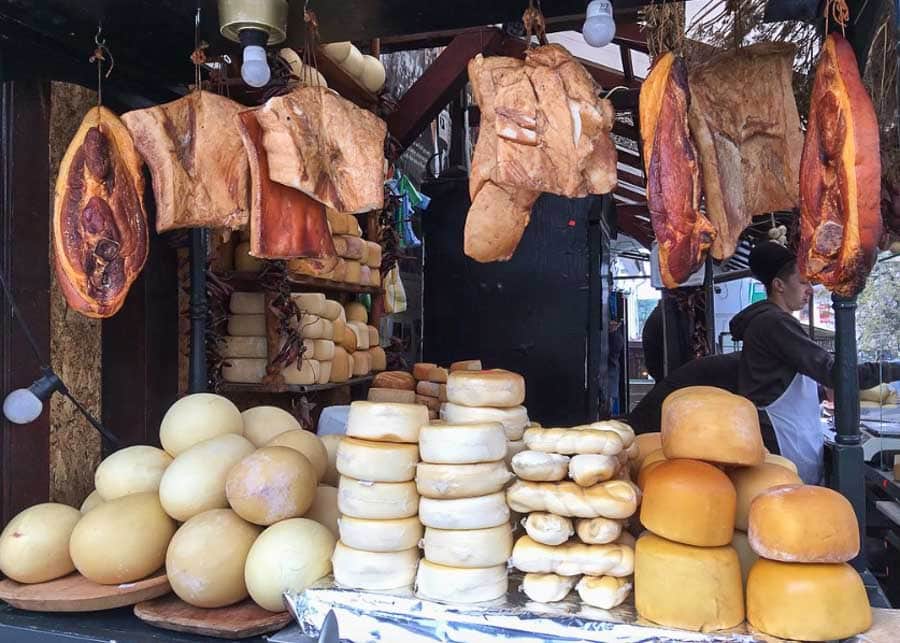
After visiting the castle you should take time to roam around the village of Bran or at stop at the souvenir and food stands on the castle ground. You can sample some of the fine delicacies or even try some authentic Romanian dishes.
Admission Fees and Opening Hours
The castle is open Monday: 12PM – 4PM, Tuesday–Sunday: 9AM – 4PM (Last Admission: 4PM).
Admission prices are:
Adults: 45Lei (9€)
Seniors (65+): 35Lei (7€)
Students: 25Lei (5€)
Children: 10Lei (2 €)
READ NEXT: Monemvasia – the Longest In habited Castle-Town in Greece
A Final Word
Bram Stoker’s story brought a lot of fame and glory to Bran Castle, which is now one of the most popular places to visit in Romania. Today, Transylvania is not so much known for it spectacular scenic beauty or its medieval towns, as it is for being the home of Dracula.
Along with Dracula’s fame came the inevitable vampire-themed tourism and the many themed souvenirs, which is rather sad. English speaking tourists began flocking to Bran in search of, well, vampires! So all around the fortress you’ll find hundreds of stalls selling souvenirs for vampire enthusiasts.
The real Dracula Castle at Poenari did not raise to fame because of its isolated location and dismal state. So people continue to come to Bran Castle, which became a preferred tourist destination in Romania.
OTHER INTERESTING PLACES TO VISIT IN ROMANIA:
- 10 Reasons to Visit Romania and Why You Shouldn’t Postpone It
- 15 Fun and Interesting Things About Romania You Probably Didn’t Know
- Bucharest Village Museum – a Fascinating Insight into Romania’s Rural Life
- Best Restaurants in Bucharest, Guaranteed to Impress You
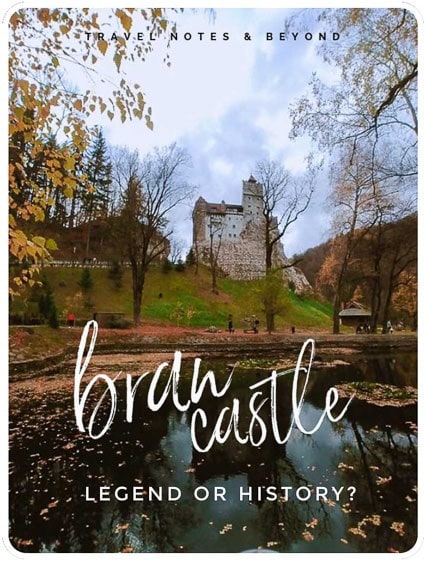

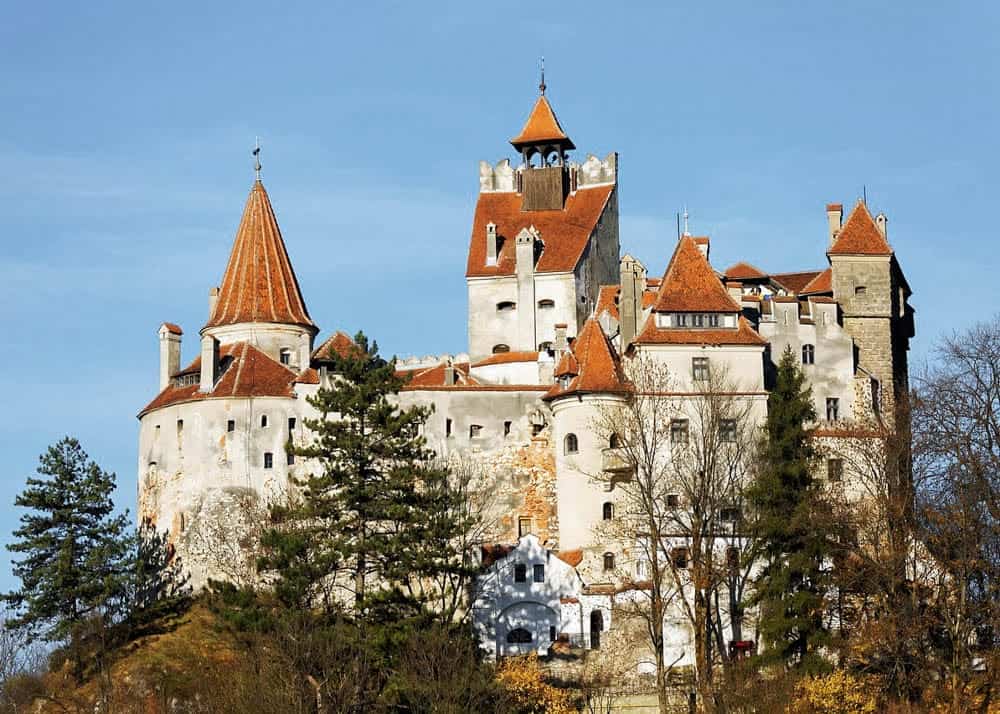
 25 Amazing Beaches in Orange County, California, to Visit This Summer
25 Amazing Beaches in Orange County, California, to Visit This Summer



Ankita Sharma
This post has fascinating pictures. I have no idea about it before read this post.
Thank you for adding new experience of knowledge to my life.
John
As I was reading through the article, I couldn’t help but notice in most of the pictures, it was sunny there. So naturally, I was thinking it’s too sunny for a vampire! Jokes aside, that is one beautiful destination. Also thank you for educating me about its history of it. I hope one day I can visit this castle and see it with my own eyes
Anda
I hope you will, John.
Boobie Needham
My ex husband Valerian was from Arges, Romania. There’re ruins of a castle that also belonged to Vlad in that town.
Poenari Castle also known as Poenari Citadel was a home of Vlad the Impaler. The Citadel is situated on top of a mountain and accessed by climbing 1,480 concrete stairs.
Anda
Actually Plenari is the real castle of Vlad the Impaler. Bran castle was tied to his name only through the resemblance Bram Stocker’s character, Count Dracula.
Monica White
No, Romanians are not happy at all about the association of Vlad Tepes, to Dracula. In fact it mounts to an insult. Vlad Tepes was the prince of Wallachia and a military commander who has led heroic battles against the Ottoman Empire occupation of the country. Killed in battle in 1476, he is considered a national hero of Romania. You should brush up on your knowledge of history before making assumptions.
Anda
I’m not sure what your beef is exactly, but you seem a little lost. Are you sure you read this post? Because this article is about Bran Castle and not about Vlad Tepes. Vlad the Impaler was erroneously association with this castle or with Bram Stocker’s character, Dracula. So whether he is considered a national hero or not, it’s irrelevant in this particular case.
Subhashish Roy
I have always loved visiting Castles and this Bran Castle looks a such a wonderful one to be visiting. Romania is one of the few countries in Europe that we haven’t visited and this lovely castle would probably be one of the reasons to visit. With 57 rooms to visit it certainly would mean a lot of history to look back on. The village of Bran would also be nice to visit as well as the food and souvenirs corners.
Anda
Bran Castle is definitely one of the places you should visit in you go to Romania.
Paula
This was such an interesting story. Bran Castle is definitely a place we would love to visit. Not only that we loved visiting castles in Europe but this one has a special legend attached to it. Romani just as itself too seems very interesting country to visit. I will bookmark this for sure for our future travels!
Chloe Beaver
This is so interesting! I had no idea that Bran Castle was where the legend of Dracula comes from. So cool that you got to visit it, too! I’m sure my family would love to check this out.
Umiko
Reading this is like refreshing my memory about what I read about the castle. But yours is definitely more informative. As a dracula lover – at least I used to – I still want to make a visit here although I know the story behind it. I wonder whether Bram Stoker ever got recognition from the Queen Marie family as he made this castle famous all over the world.
Anda
The novel wasn’t known in Romania at the time. It actually became famous much later. But I’m sure Romanians are very happy that Bran Castle was associated with Dracula’s story. This drives a lot of tourism to it.
Natascha
Nice pictures of Bran Castle! I visited the castle a few year ago and also found it very inspiring. I think the whole village lives on the Dracula story and the castle. We stayed at the local campsite called Vampire camping.
Anda
I had no idea they have a camping with that name, hahaha!
Linda (LD Holland)
On the travel wish list! Would love to visit Romania. And no visit would really be complete without a stop at the Bran Castle. Even if only the description of the place inspired Dracula. That lovely spot with the English park does not really match the dark castle of the stories. I will certainly plan enough time to see the whole 57 rooms.
Bhushavali N
This is really fascinating. I always love hearing local legends plus authentic history from historians and just wonder at our human minds. It’s funny how the local legend formed here after a fiction was written loosely based of a this castle. I read a bit about Vlad III and now I can relate to the similarity with Dracula… Intriguing. Now, it is quite a stark difference from Vlad’s castle to Queen Marie’s castle. That’s beautiful.
Anda
The thing is that Bran Castle was actually never Vlad III’s castle. That was only a speculation based on Bram Stocker’s novel “Dracula”.